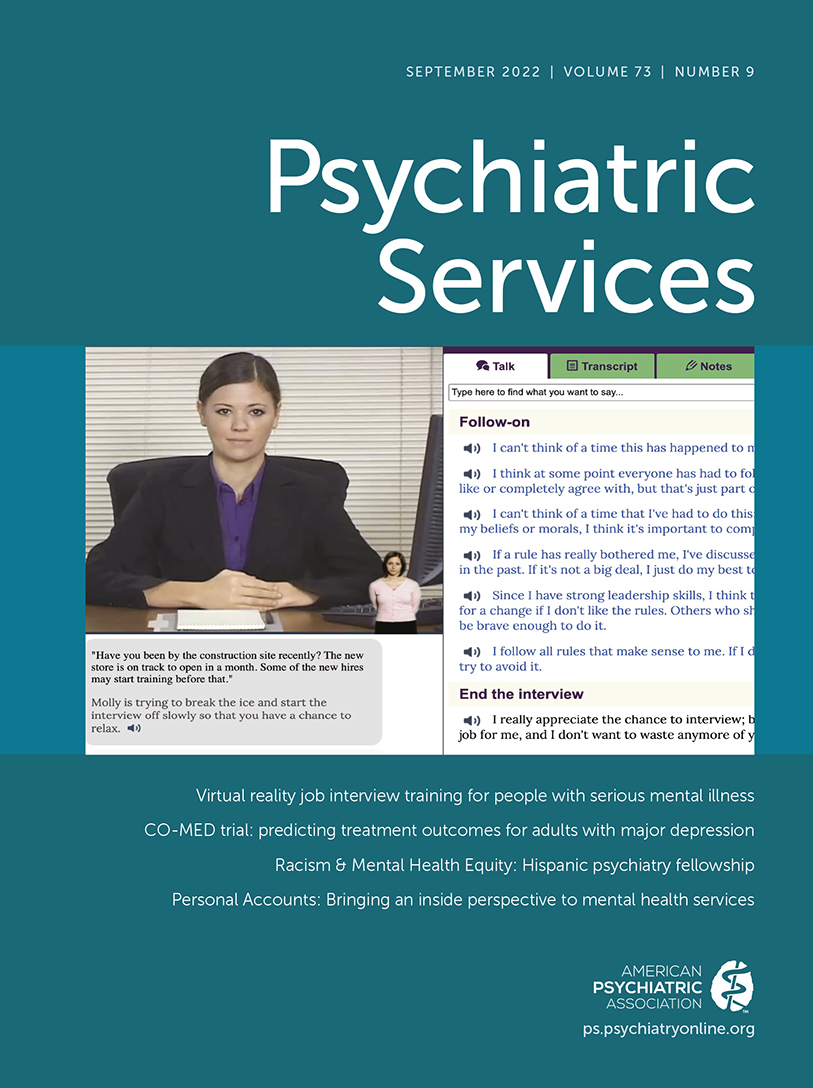An RCT of Virtual Reality Job Interview Training for Individuals With Serious Mental Illness in IPS Supported Employment
Abstract
Objective:
Virtual Reality Job Interview Training (VR-JIT) is a computerized interview simulator with efficacy at enhancing interview skills and employment outcomes. A randomized controlled trial assessed VR-JIT effectiveness for participants in individual placement and support (IPS), in which approximately 55% of individuals with serious mental illness obtain employment.
Methods:
Ninety participants with serious mental illness were randomly assigned to IPS+VR-JIT (N=54) or IPS as usual (N=36), completing pretest-posttest assessments and an employment evaluation at 9 months. Intent-to-treat chi-square analysis, multivariable logistic regression, Cox proportional hazards models, and mixed-effects linear regressions were conducted. Fifty-one percent were IPS nonresponders (i.e., no employment within the first 90 days of IPS).
Results:
IPS+VR-JIT participants did not have significantly higher employment rates, compared with IPS-as-usual participants (43% versus 28%). IPS nonresponders (N=46) in the IPS+VR-JIT group had greater odds of obtaining employment (odds ratio [OR]=5.82, p=0.014) and shorter time to employment (hazard ratio=2.70, p=0.044) compared with IPS nonresponders in the IPS-as-usual group. Intent-to-treat mixed-effects linear analyses indicated that IPS+VR-JIT, compared with IPS as usual, significantly improved interview skills (p=0.006), interview confidence (p=0.013), and interview anxiety (p=0.019).
Conclusions:
VR-JIT’s potential benefits (increased employment in a shorter time) appeared to be specific to IPS nonresponders, whereas employment outcomes for recent IPS enrollees were not affected. VR-JIT could be a valuable resource for employment specialists to support IPS nonresponders, because 47% of participants engaged in mock interview training with their specialist. Future research should focus on evaluating the effectiveness and implementation of VR-JIT among IPS nonresponders.



